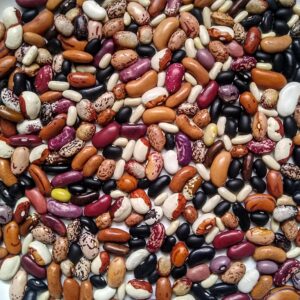
Frank Morton posted this comment on the SuperCarrot piece. His additions to the story need to be front and center:
Thanks for bringing this up to where the sun shines, Matthew.I second everything that you are breathing fire about, but particularly to the uncritical praise from the hi-tech set. After actually reading the paper, as you must have done, several big issues jumped out at me that must have flown past a Wired reporter.
Starting at the top of the paper, “Nutritional impacts of elevated calcium transport in carrots,” we see that this is a paper about the impact of GM-tech on food and human health. We also see that it comes from the Vegetable and Fruit Improvement Center at Texas A&M. Riddle me this–Is this Center the result of Monsanto largess? Many new “crop improvement facilities” at our land grant universities come directly from the biotech industry (eg. a new biotech crop science building at WSU in Pullman, WA), and one can only assume that such investments expect affirmative results.
Directly under the the names of the researchers we find the names of the editors of the paper, who are associated with the Plant Science Center, St. Louis, MO. Is it just a coincidence that this the home address for the Monsanto corperation, Matthew?
The abstract begins with a discussion of calcium deficiencies “worldwide” that results from “Nutritional recommendations (that) emphesize ingestion of plant-based diets rather than…animal products. However, this plant based diet could limit the intake of essential nutrients such as calcium.” The abstract donates the first third of it’s space to justifying the use of novel technology for the prevention of osteoporosis caused by a lack of calcium in carrots…Never is it mentioned that carrots and other members of the Carrot Family of vegetables are not particularly good sources of this mineral. Nor that the Cabbage Family would be the appropriate source for getting ample calcium in the vegetable diet–which is what people commonly do in the real world. Kale, cabbage, broccoli, Chinese cabbage, turnips, radish, or leaves of any wild or domestic member of this crop family would easily supply more calcium AND more vitamin A and C, than any carrot–transgenic or natural. This seems easy to overlook amid all the science jabber.
In the body of the paper we learn that these crops are being grown in hydroponic solution, not in soil, which at first passes as a simply scientific means to control the availability of calcium isotopes in the test carrots. There is a passing reference in the Results section to the fact that the test carrots did not absorb extra heavy metals, but the significance of this observation cannot be found until we get to the very last paragraphs in the Discussion section. Here we learn that the genetic transformation that allows the absorption of extra calcium by the carrot (”overexpression” of sCAX1 transporter gene) ALSO ALLOWS THE ENHANCED ABSOPTION OF HEAVY METAL IONS, INCLUDING CADMIUM, COPPER, MANGANESE, IRON, AND ZINC…
The reason that the test carrots had a “2-fold increase in Ca++ and no increase in the content of other minerals” (cadmium, copper, iron, manganese, and zinc) as noted in the Results, is because these minerals were not included in the hydroponic solution! That is some result! The researchers note that the ionic radius of cadmiun is “almost identical” to that of calcium, “…so we used cadmium-free hydroponic solutions to avoid any adverse metal accumulation in the carrots.”
The concentrations of other metals in the solution is not mentioned, but we are left to assume that these were present at some level (because all except cadmium are essential trace nutrients), but likely were not available to the test crops in overabundance, as was the calcium. In other words, if these transgenic carrots were grown in real agricultural soils, we may find that they absorb toxic levels of whatever heavy metals or normal trace nutrients are available in those soils.
In the final paragraph of Discussion, we are informed that the real significance of this work is the finding that “overexpression of a gene found in all plants”–the CAX-transporter gene–could lead us into a new era of enhanced nutrition founded on plant-based diets.
Could be a hard sell to the vegetarians I know.
My Final Comment:The cruciferous vegetables (which are related to Arabidopsis, the experimental source of the CAX1-gene used to transform the “super-carrot”), especially Brassica juncea, are well-known bioaccumulators of heavy metals. Brassica juncea is used in bioremediation as a lead absorber for heavily tainted soils. Using this genetic trait to create “overexpression” of large metal ion transport systems in a wide array of crops my have unintended consequences for agriculture and nutrition in the real world where soils vary widely in their native concentrations of potentially toxic metals. It just may be that ‘modulated expression’ of such transport systems in crops–as opposed to “overexpression” of these absorptive mechanisms–is nature’s way of keeping both plants and animals healthy in real life.
We are evolved to eat many things to be healthy…not just “super-carrots” and “golden rice.”
–Frank MortonWild Garden Seed
